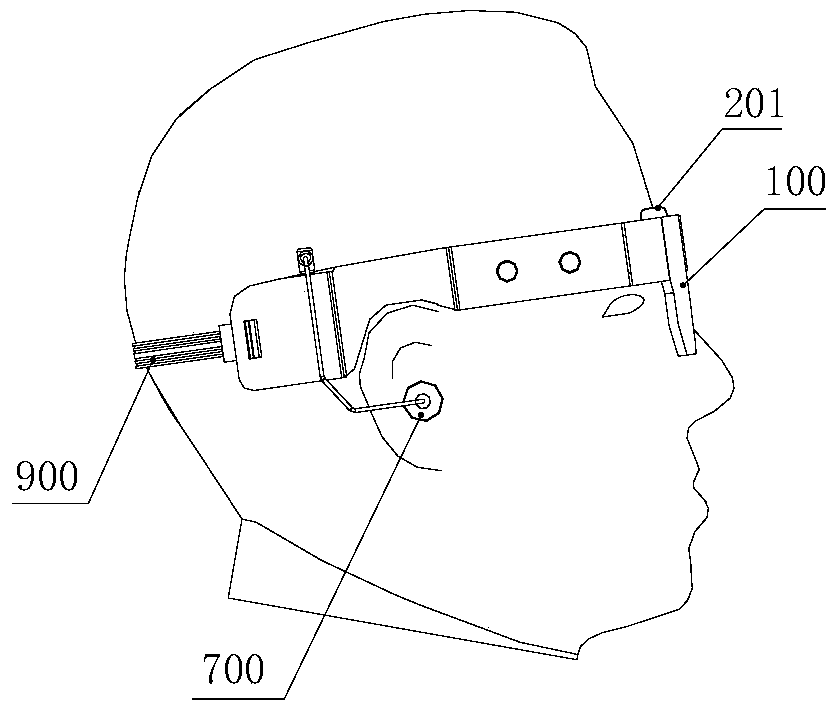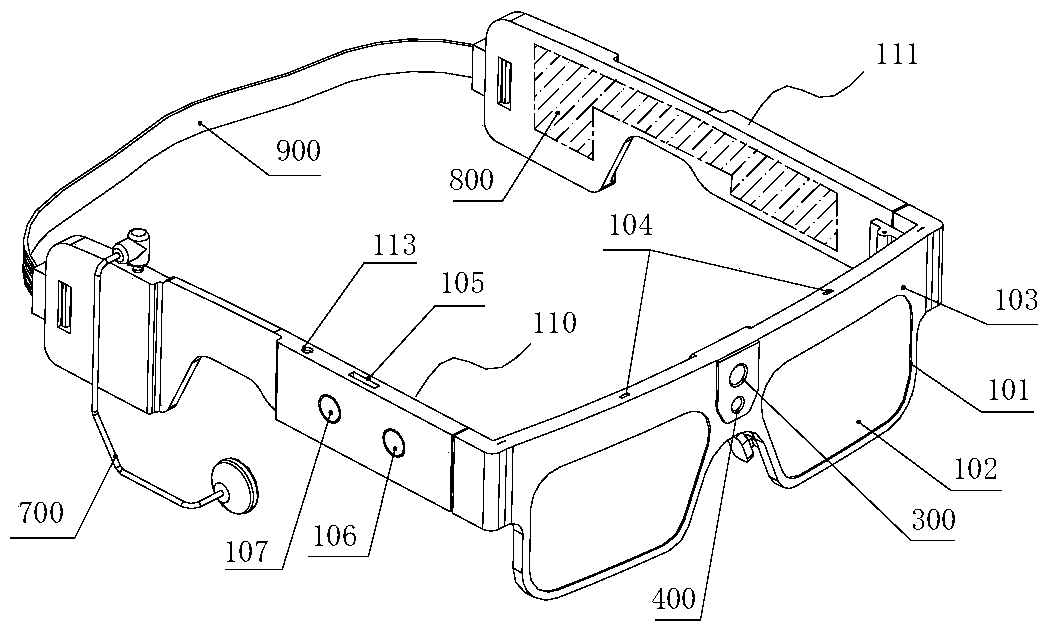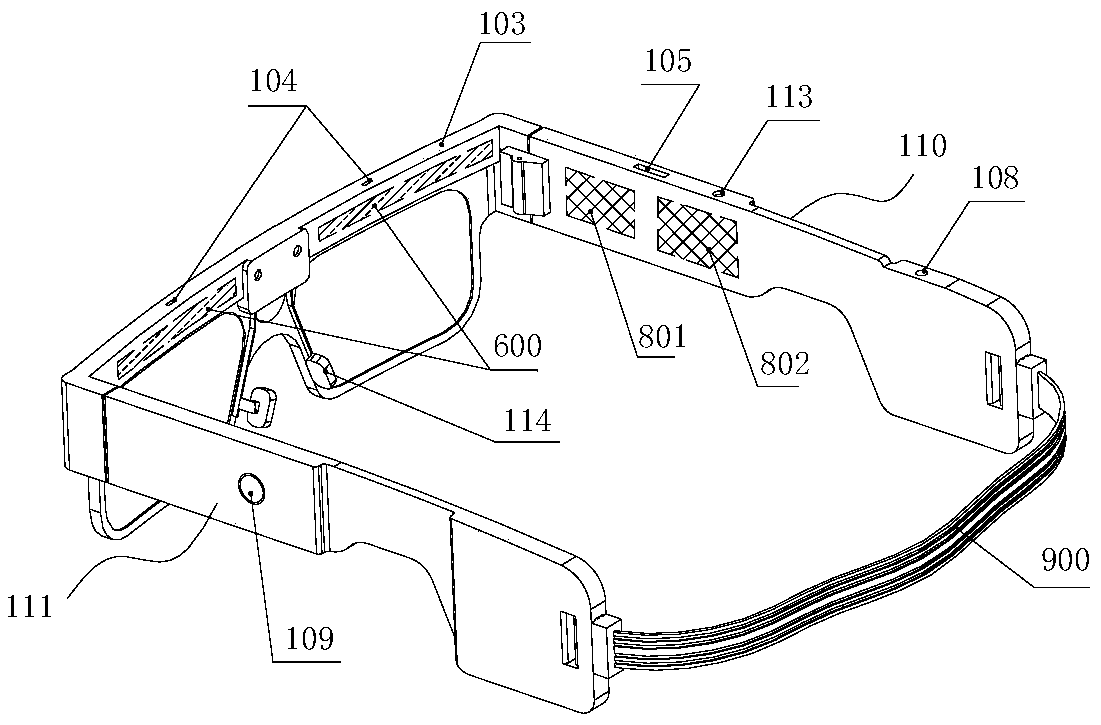Intelligent wearing device for vision recovery of patient with posteriority blindness and making method thereof
A smart wearable, acquired technology, applied in ophthalmic treatment, etc., can solve the problems of biocompatibility, long-term stability, difficult to adapt to the needs of individual differences of blind blind people, and the number of electrode pairs in the microelectrode array is small, etc. Problems, to achieve the effect of rich portability, safe use, and more electrode pairs
- Summary
- Abstract
- Description
- Claims
- Application Information
AI Technical Summary
Problems solved by technology
Method used
Image
Examples
Embodiment Construction
[0052] The present invention will be further described in detail below in conjunction with the drawings and specific embodiments:
[0053] 1. Such as Figure 1-5 As shown, the electronic wearable device for vision restoration for patients with acquired blindness includes: a microelectrode array 202 arranged inside the eyes; smart glasses 100, earphones 700 and elastic buckles 900 arranged outside the eyes; The stimulus signal guiding soft band 201 between the array 202 and the smart glasses 100; the earphone 700 is connected to the earphone jack 108 provided on the left temple 110; the elastic buckle 900 is arranged on the back of the head and has a buckle structure, By inserting the buckle head 901 into the buckle seat 112 corresponding to the two temples, the smart glasses 100 can be fixed on the head of the blind patient, which prevents the smart glasses 100 from falling to the ground and the microelectrode socket 104 from loosening.
[0054] When the patient needs to use it, w...
PUM
 Login to View More
Login to View More Abstract
Description
Claims
Application Information
 Login to View More
Login to View More - R&D
- Intellectual Property
- Life Sciences
- Materials
- Tech Scout
- Unparalleled Data Quality
- Higher Quality Content
- 60% Fewer Hallucinations
Browse by: Latest US Patents, China's latest patents, Technical Efficacy Thesaurus, Application Domain, Technology Topic, Popular Technical Reports.
© 2025 PatSnap. All rights reserved.Legal|Privacy policy|Modern Slavery Act Transparency Statement|Sitemap|About US| Contact US: help@patsnap.com



